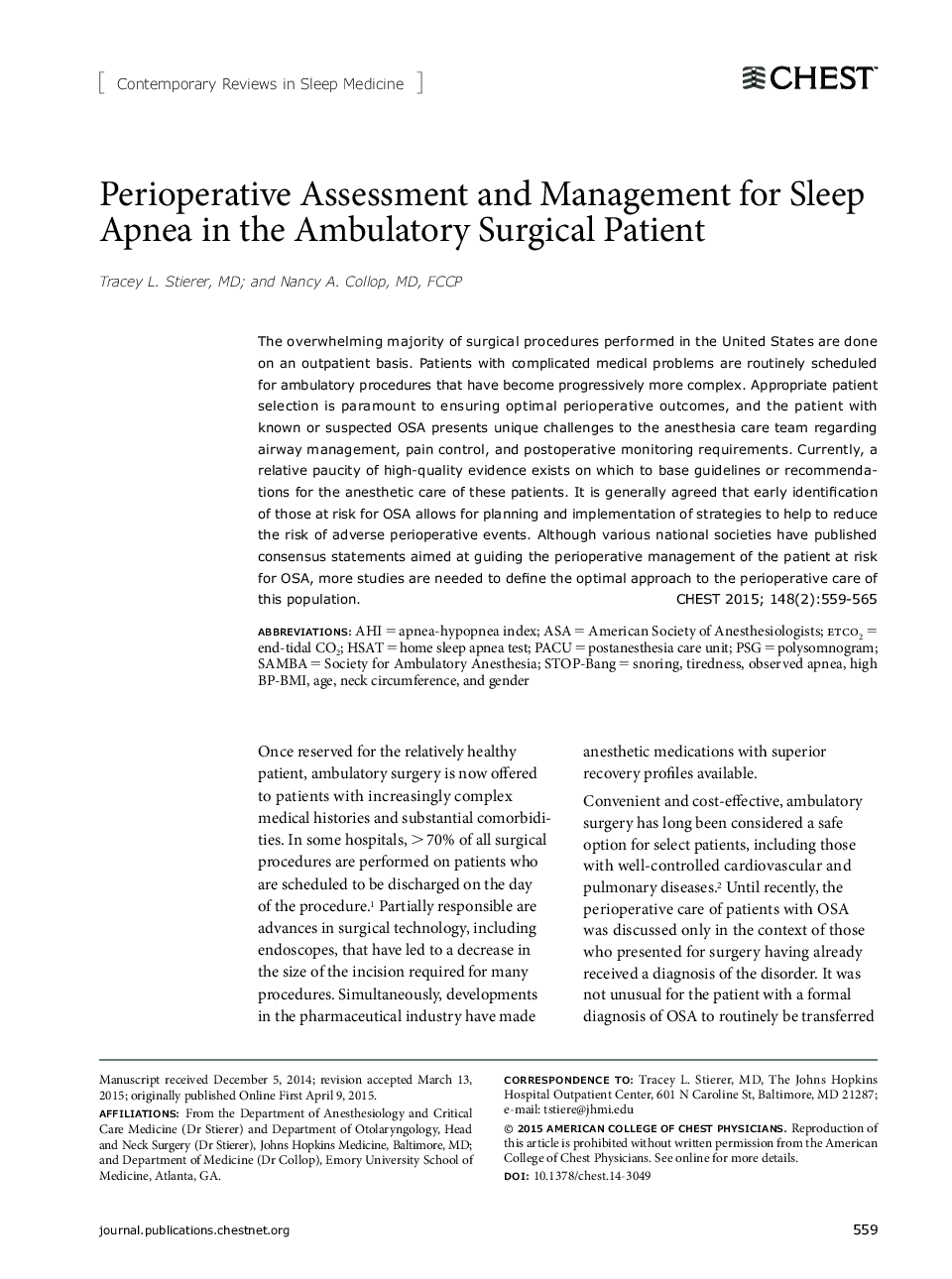| Article ID | Journal | Published Year | Pages | File Type |
|---|---|---|---|---|
| 5953876 | Chest | 2015 | 7 Pages |
Abstract
The overwhelming majority of surgical procedures performed in the United States are done on an outpatient basis. Patients with complicated medical problems are routinely scheduled for ambulatory procedures that have become progressively more complex. Appropriate patient selection is paramount to ensuring optimal perioperative outcomes, and the patient with known or suspected OSA presents unique challenges to the anesthesia care team regarding airway management, pain control, and postoperative monitoring requirements. Currently, a relative paucity of high-quality evidence exists on which to base guidelines or recommendations for the anesthetic care of these patients. It is generally agreed that early identification of those at risk for OSA allows for planning and implementation of strategies to help to reduce the risk of adverse perioperative events. Although various national societies have published consensus statements aimed at guiding the perioperative management of the patient at risk for OSA, more studies are needed to define the optimal approach to the perioperative care of this population.
Keywords
Related Topics
Health Sciences
Medicine and Dentistry
Cardiology and Cardiovascular Medicine
Authors
Tracey L. MD, Nancy A. MD, FCCP,
